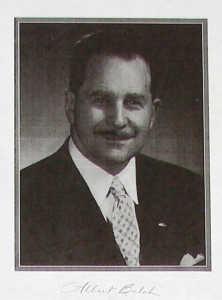
In 1995 the Wedgwood Community Council placed two Welcome to Wedgwood signs using Dept. of Neighborhoods grant funds. In 2007 the matching sign was stolen from the corner of NE 70th Street. A police report was filed, so if you know where the missing sign is, please report it.
Wedgwood in northeast Seattle is a residential neighborhood with a vibrant commercial district along its central north-south arterial, 35th Ave NE. The neighborhood still had large tracts of vacant land until after World War Two ended in 1945. Then the area began to be built up with housing for young couples who were starting out new lives after the war.
The concept of “neighborhood boundaries” is a bit arbitrary. The boundaries were emphasized by Seattle’s Department of Neighborhoods when it was formed in the 1980s, to help give a sense of identity and involvement in local issues.
The boundaries of the Wedgwood neighborhood are NE 75th to 95th Streets, 25th to 45th Avenues NE, and west to Lake City Way between NE 85th to 95th Streets. Here’s a link to the City of Seattle neighborhood map (misspelled Wedgewood!)
Wedgwood’s neighbors to the south are Bryant, Hawthorne Hills, Laurelhurst, Ravenna and View Ridge. To the north is Meadowbrook and Lake City. Wedgwood’s eastern border is with the Sand Point Country Club and Inverness, located on the ridge above Lake Washington. Farther east is LaVilla, Matthews Beach and Sand Point.
There are some other names for the neighborhood which were used by developers and which faded in popularity. Morningside Heights is a plat name nearest to NE 95th Street. Chelsea was a real estate development on NE 110th Street in the area of what is now Nathan Hale High School.

The Seattle City Clerk’s on-line map of the Wedgwood neighborhood.
Like many other northeast Seattle neighborhoods, Wedgwood acquired a name which was first associated with a real estate development, and then the name gradually became attached to the whole neighborhood.
In 1941 Albert Balch started with one section of land and named it the Wedgwood plat. Balch then acquired more nearby tracts of land and built more houses on both sides of 35th Ave NE, with variations on the Wedgwood name such as Wedgwood Park.
Taking on the name “Wedgwood”

The Wedgwood Ale House at 8515 35th Ave NE was the first business to change its name to Wedgwood, as of about 1946.
Balch did not set out to deliberately name the whole neighborhood. The Wedgwood name caught on gradually so that by the end of the 1940s local businesses began to use the name.
A look at the phone book shows that the former Hanson’s Tavern, ancestor of today’s Wedgwood Ale House, was the first to change its name to “Wedgwood” circa 1946 when the present building was built, which enclosed the original tavern.
As of the 1930s the “center of the neighborhood” had been on 35th Ave NE at NE 95th Street where a small commercial district had developed. That area was sometimes called Maple Leaf because of the elementary school on NE 100th (no longer there now).
In the 1940s and 1950s after Balch’s housing developments were built near the intersection of NE 85th Street, the NE 95th Street intersection declined in terms of having more businesses. The gravitational center of the neighborhood shifted to the intersection of NE 85th Street because of population growth and because developer Albert Balch held this intersection for business sites. Today the NE 85th Street intersection is considered the heart of Wedgwood’s commercial district.
The neighborhood school is named Wedgwood
It was not until 1954 that the entire Wedgwood neighborhood came into the City Limits of Seattle. By 1954 when the neighborhood got its own elementary school, the name Wedgwood seemed the most appropriate for the school, as it had come into general use. The first Wedgwood Community Club used the school attendance boundaries to define the boundaries of the neighborhood in the 1950s.

A 1946 article in American Builder magazine said that “a stone entrance typifies the sturdy character of Wedgwood housing.”
Today most businesses spell it “Wedgwood” not WedgEwood, because they know the story of how the name came about. In an April 1956 interview for the Wedgwood neighborhood newsletter, developer Albert Balch told that his wife Edith had suggested the name.
It is my belief that “Wedgwood” was meant partly as an allusion to the wooded forty acres which Balch was going to develop, and it was a reference to the English-style village atmosphere suggested by the Cape Cod & Colonial houses, the winding streets and the gateposts at the NE 81st Street entrance to the first Wedgwood plat.
All about Wedgwood

Albert S. Balch 1903-1976
See the About page on this blog for more description of Wedgwood, and look at the Categories on the right-side margin of this page for a list of subjects and articles. Subjects included on this blog are a series of articles about the life of Albert S. Balch, the developer who built the first plat of houses called Wedgwood.
The Links which are listed on the right margin are research resources which I (Valarie) regularly use, many of which are on-line.
And more about Seattle history
Over time as I have been blogging about Seattle history, I have added articles about other neighborhoods such as Fremont, Meadowbrook and Lake City, and historical subjects such as the Civil War veterans who later came to Seattle. The most-viewed article on this blog is a general summary of how the City of Seattle was founded, with an explanation of the downtown Seattle street names.
